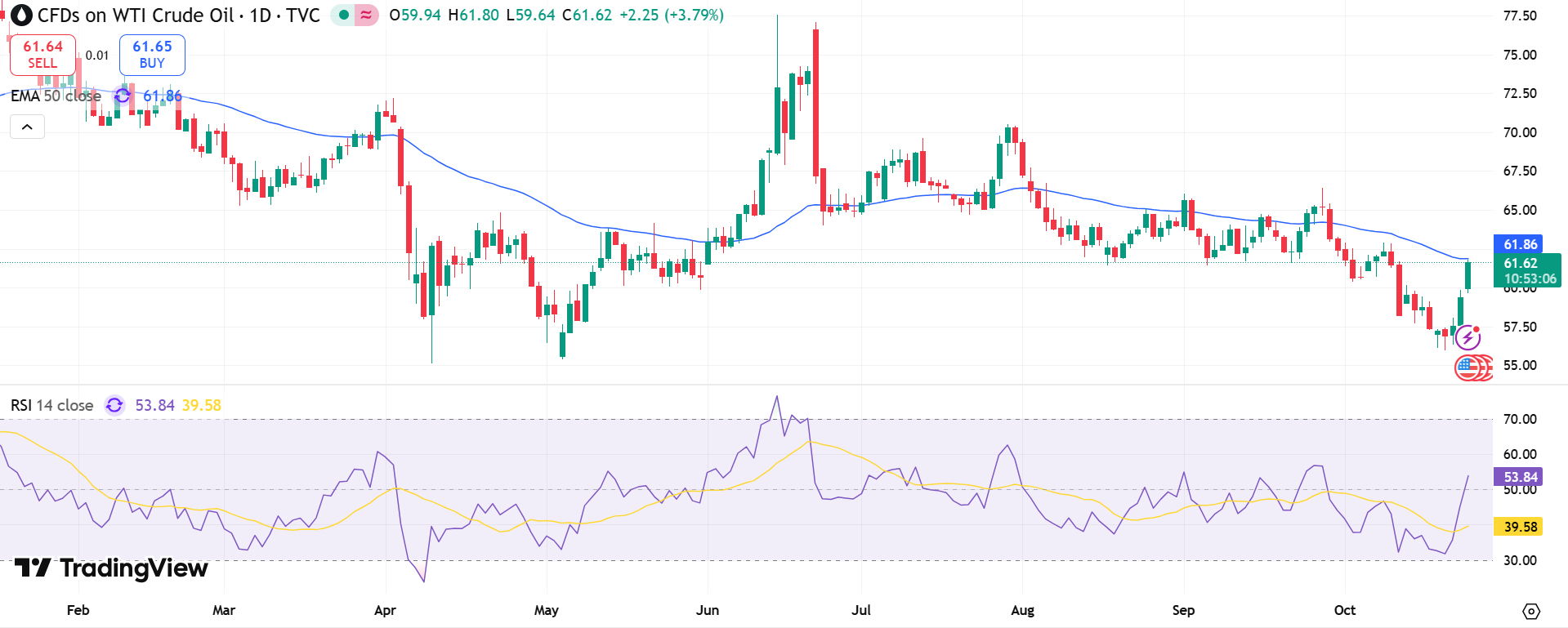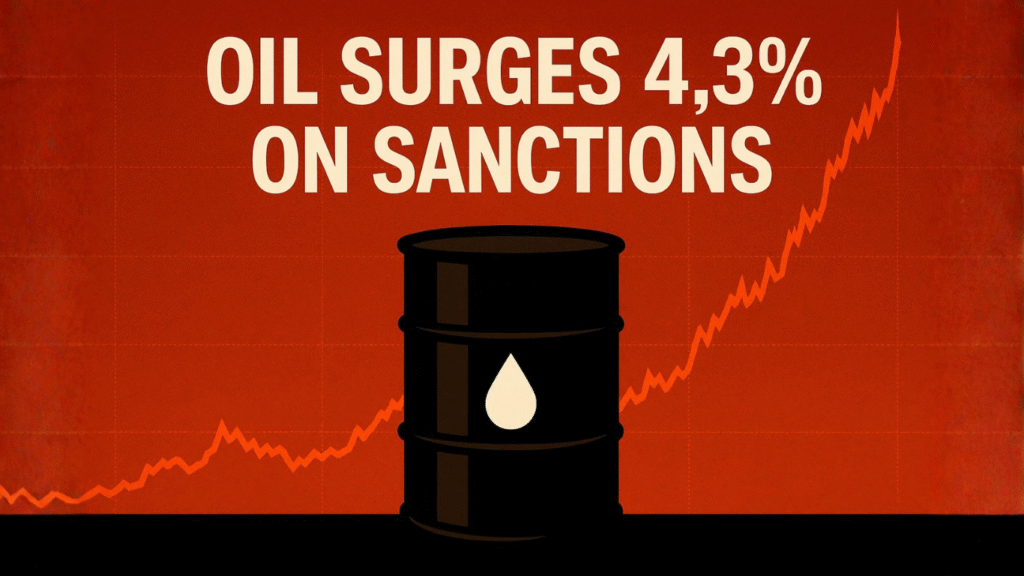Oil prices surged over 4% on Thursday, extending their rally from the previous session after Washington imposed new sanctions on major Russian oil producers Rosneft and Lukoil over the ongoing war in Ukraine.
By 08:41 GMT, Brent crude futures were up $2.71, or 4.3%, at $65.30 per barrel, while U.S. West Texas Intermediate (WTI) climbed $2.56, or 4.4%, to $61.06. The sanctions, which directly target two of Moscow’s largest exporters, have raised concerns about disruptions in global oil flows.
According to Saxo Bank analyst Ole Hansen, refiners in China and India may now be forced to seek alternative crude sources to avoid being locked out of Western financial systems. Washington signaled that further measures could follow if Moscow does not agree to a ceasefire in Ukraine.
Global Market Reaction and Supply Risks
The sanctions followed similar moves by Britain and the European Union, with the EU approving its 19th sanctions package, which includes a ban on Russian liquefied natural gas (LNG) imports. Immediately after the announcement, both Brent and WTI futures rose more than $2 a barrel, further supported by a surprise drawdown in U.S. oil inventories.
UBS analyst Giovanni Staunovo said the long-term impact will depend on how India, a key buyer of Russian crude, responds. India became the largest importer of Russian oil following Moscow’s 2022 invasion of Ukraine, capitalizing on discounted prices.
Industry insiders revealed that Reliance Industries, India’s top private refiner, is considering sharply cutting or halting imports of Russian oil altogether. Should that happen, traders expect supply imbalances and higher freight costs across Asia.
Market Skepticism and Inventory Trends
Despite the sharp rally, some analysts remain unconvinced that the new sanctions will meaningfully alter Russia’s output or revenues.
“Most sanctions over the past 3.5 years have failed to significantly impact Russia’s oil exports or earnings,” said Claudio Galimberti of Rystad Energy.
Recent OPEC+ production increases have added to global oversupply pressures, capping potential price gains.

Meanwhile, U.S. government data showed that crude, gasoline, and distillate inventories fell last week as refining activity accelerated. That drop in inventories, combined with fresh geopolitical uncertainty, has helped stabilize oil prices after a month-long decline.
Key Highlights:
- Brent crude up 4.3% to $65.30; WTI up 4.4% to $61.06
- U.S., UK, and EU tighten sanctions on Russian energy giants
- India’s import decisions to determine global supply direction
As investors weigh the effectiveness of sanctions and shifting demand dynamics, oil remains sensitive to policy shifts and geopolitical developments that could reshape the global energy landscape.


